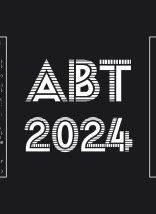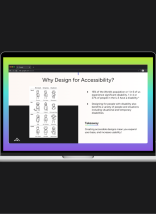Would I rather be feared or loved? Easy, both. I want people to be afraid of how much they love me. -Michael Scott
Creativity in the tech world is an interesting beast. Everyone wants to use it and claims to love it. But it also causes a great deal of fear, leaving creative employees struggling to be heard. If you are that person, this post, by an experienced marketing writer, will speak to you.
When I first decided I wanted to be a writer, I imagined the hardest part would be coming up with good ideas. Back then, creating a new idea meant summoning elegant words, phrases, and story out of nothing more than my daydreams and boredom. Where did the really great creative writers get their ideas? It all seemed like an impossible mystery—which didn’t stop me from wanting to try.
Times are different now. For one, I’m a marketing writer by profession, so I mostly write for hire. Two, finding ideas worth writing about is easy. There is a tsunami of shared information on social media to mine from. Plus, I’m lucky enough to have knowledgeable colleagues and clients. They always have something interesting to discuss. Then there is the remarkable surplus of quality marketing websites available. And three, I no longer imagine great ideas simply appear out of nowhere. They show up from making connections between people’s wants, fears, and every sticking point between.
Then there’s the fourth thing that I know now. The hardest thing about being a successful writer for hire is not coming up with a good idea. It’s not even executing on that good idea to make a quality product (though that does take time, effort, and practice). No, if I had to name the hardest thing about writing for hire, it’s getting your client to like your idea and pay you to produce it.
The Trouble with Good Ideas: Risk
You know how the pitch process goes. You enter the room with the perfect concept for a client’s new project or campaign—it’s inventive, compelling, and will drive lots of sales. All you need to do is convince the client this idea is worth their investment—which can be really, really hard.
Why? If you like the idea enough to champion it, shouldn’t that alone speak to its quality? If it inspires you enough, then it’s likely creative, different, and promises to actually be fun to carry out. The trouble is, words like “new”, “creative”, and “different” are all dangerous trigger words to most clients. These words all suggest that the idea lacks a proven track record. Clients may also not immediately recognize the idea. This is most likely intentional on your part. You designed the idea to not be like what the client or their competitors did in the past.
Here’s the dilemma: you’re proposing something risky, and your client has been trained for years to avoid risk unless it’s proven to be minimal. If you want to sell a client on your idea, you need to prove your potentially risky idea is not that risky after all.
So, how do you do that? Here are my favorite strategies for how to present your good idea and win your client’s approval so you can actually execute on it.
How to Pitch Your Ideas So Clients Will Actually Listen
1. Connect your idea to your client’s brand
It’s amazing how often creative workers come up with imaginative, unique ideas without thinking about the client’s brand. They present the work with little regard for how well it actually matches the client’s style and voice. The simple truth is that not all great ideas are great fits for any client. Consider a cybersecurity company that prides itself on being no-nonsense, cover-all-the-bases, serious experts. They won’t be happy with a snarky campaign that uses a lot of funny one-liners. On the flip side, a slick 3D animation that never shows a person’s face is not going to work for a brand that focuses on personality.
As any good writer knows, it’s vital you consider your audience when pitching an idea. Show them how your idea honors their work. Make it clear that it captures their company’s tone, history, and style. This helps your bold new plan seem less like a departure. It now looks like a natural extension of what your client is already saying and doing. In fact, bonus points if you can point to a past campaign of your client’s that links to your idea.
2. Support your idea by linking it to good ideas that have come before
This point can seem like compromising your creative vision. After all, what’s less imaginative than pushing an idea based on something another company is already doing? My advice is not to copy someone else’s approach but rather support your idea by showing how it might perform. To mitigate risk in the mind of your client, you need to show how your idea not only will work, but that it has already worked in other situations.
Before you present your idea, look for examples you want to use from similar brands or industries. While you’re unlikely to find a campaign or ad exactly like your brilliant idea (if you do, your idea might not be as original as you thought), it’s not too hard to show examples that match the tone or style of your big idea. If your client likes your examples, they’re that much closer to agreeing to your creative pitch of a related idea.
3. Show how you will verify this idea is successful
If the first two points are about mitigating risk, this tactic is about proving your idea works. In the age of big data, it’s essential you can describe how you will analyze and measure the success of your approach. Provide details about the assets you propose to make, the way you will monitor user engagement, and how you will adjust or alter your approach based on how your client’s customers respond.
Volumes of blogs and guides have chimed in about how to digitally measure success. However, as you decide between click-through-rates or downloads or new sessions to verify success, keep this in mind: the metrics that most matter to your client are how many leads and sales your campaign generates. You might not be able to directly prove your big idea drove sales without an actual consumer survey about your campaign, but you need to be confident your idea will improve the client’s bottom line.
4. Emphasize how your idea will stand out—positively
Consider this a counterpoint to linking your big idea to past successes. If your idea begins to feel too similar to other campaigns, you will need to describe details that set your idea apart. The best way to do this is by doubling down on how you link the client’s brand to your approach. Your client will want to feel like you’ve crafted a custom campaign that’s tailored to their company, so be specific about how your idea will represent their brand well.
5. Demonstrate enthusiasm and commitment to your idea
As the creator of your big idea, it is up to you to be passionate about your vision and make that passion infectious. Tell the story of how you came up with the idea. Share the reactions from your teammates. Paint a picture of what this successful campaign will look like. This is the kind of enthusiasm that’s essential to creating truly memorable and effective campaigns—and the same kind of enthusiasm you should present in your pitch and elicit in your client.
More importantly, you need to communicate to your client that you are invested in this idea’s success. No one wants to partner with “an ideas guy” who proposes grandiose schemes then becomes suspiciously absent when tough challenges arise or the idea needs rework. After all your research, data, and imagination, you must show your client they can count on you to own your big idea and put in the work to help it succeed.
It’s not risky, it’s just new
Let this be your underlying mantra as you present your ideas. While these tactics aren’t guaranteed to win your client over, each one represents a different tool to show your client that your potentially risky idea isn’t that risky after all.
If you want to hear more about the power of creative ideas and how they can best serve you, we have plenty to share. If you have a plethora of creative content you’re struggling to get out into the world, we’ve got your back.









